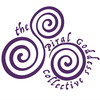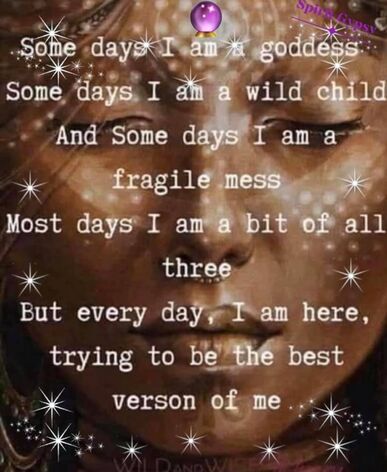|
On Thursday, July 27, I am offering a JourneyDance class at the Wilson Center in Orono. The Wilson Center is “an independent, progressive religious and spiritual organization” that “aims to build community for spiritual exploration and multi-faith dialogue.” For this JourneyDance and potluck event I put together a special “Mindbodyspirit” playlist and have been thinking about the context of spirituality in JD and in my life and life’s work.
I. I have never described myself as a spiritual person. I was raised Presbyterian, but religion never resonated with me. Church was a drag, except for the donuts. Sometimes I envy people who believe in God, who have an anchor to what I consider to be the unknown and the unknowable. Sometimes I would imagine what it would be like to be able to say, “I’m not religious, but I am spiritual.” Sometimes I would joke that yoga was as close as I got to church; I taught most Sundays and it’s as close to a spiritual practice as I have ever gotten. Perhaps I would connect spirituality to my relationship to nature, mountains, the ocean—the vastness of the universe. A love of science fiction is, perhaps, a kind of spiritual practice? It wasn’t until I participated in JourneyDance that I began to participate in what I might describe as spiritual practices. And I began to see other aspects of my life’s work as spiritual. Before JourneyDance, I took an Embodied Social Justice certificate program through The Embody Lab and was introduced to the work of Rev. angel Kyodo williams. If I was going to be religious, I would probably choose Buddhism, but all religions are too structured and too limiting for me. For a short time, I investigated Paganism, which resonated in many ways. And when I recently read a bit of Starhawk’s classic The Spiral Dance, I found that many of her descriptions of witchcraft—in history and in practice—resonate with the teaching I do in and out of academia. But, nothing speaks to me as a whole, contained spiritual belief system. Like my interdisciplinary academic work, I take bits and pieces from a variety of sources and cobble them into something that resonates with me and remains flexible. This approach is not unlike Octavia Butler’s creation of Earthseed (which is now a “real religion”) in her Parable duology. Her character, Lauren Olamina, an empath raised in the strict religious practices of her Baptist father, collects truths from a variety of sources and leads her followers through dystopic landscapes as Shaper. My students have likened me to Olamina, but I would not be so arrogant as to make this comparison myself. And yet, I am a “natural leader,” an empath, and a visionary and the power that I hold is not unlike what Olamina wields (collecting ideas, writing, taking care of people, providing opportunities for education) or what Starhawk describes as a “power that comes from within” and that “is never power over another.” Instead, it is a power that helps to grow the power of others and depends upon “personal integrity, courage, and wholeness” and “encourages healthy pride, not self-effacing anonymity; joy in one’s strength. Not shame and guilt.” This is the power—and the path—that JourneyDance has helped me to embrace more fully. II. Through The Embody Lab, I was also introduced to the work of Staci K. Haines and her book The Politics of Trauma. In addition to describing “the ever-expanding universe, the energies, beyond human, that we are living with,” she also explains spirituality as “a connection to something more vast, felt yet unknown.” Around the same time, I was introduced to the work of yoga therapist and psychologist, Gail Parker, who describes spirituality as “an ideal that lifts you beyond your everyday struggles and helps you clarify, reflect upon, and understand life from a deeper perspective, and to live more artfully.” All of these ideas about spirituality turn up effortlessly in my JD teaching, which is an art that I feel my way into. When Haines writes about spirituality, she is also writing about embodied transformation as “ways of being, acting, and relating [that] are aligned with what [we] most care about.” Gail Parker expands on this idea as she explains: “The spiritual dimension refers to our relationship to the beliefs, ideals, values, and principles that we live by; this dimension determines how we operate on the other dimensions [physical, mental/emotional, social] and how we make sense of the world.” Before JD, I had largely made sense of the world intellectually. I would push away anything that felt too woo-woo. But my JourneyDance training came about through an unbelievable string of synchronicities that cannot be dismissed as mere coincidence. People of faith might explain my experience with other words, but I can only say that there was a spiritual dimension that I have continued to explore through movement, meditation, oracle cards, and an open mind to learning more about myself and my purpose—education, embodiment, and empowerment—and the path that I walk, or dance, through this life. Gail Parker explains that “it is by connecting to this higher state of consciousness that you begin to reconnect to values that express your internal truth, allowing you to create meaning for yourself and make sense of things.” And this is the key to a spiritual life for me—this reconnection and the creations that have been birthed from my desire to “make sense of things.” The Spiral Goddess Collective is one of these creations and each JourneyDance playlist is a stepping stone on this path that has no destination, only process. III. This “Mindbodyspirit” playlist brings together some of my favorite songs and practices from other playlists and provides a variety of ways of considering the connections between mind, body, and spirit. The titles of the songs for the first few tracks speak for themselves: “For My Soul”; “Waking Up”; “Gold Flow”; and “My Mind” take us through a welcoming of our mindbodyspirit, connecting to our internal truths, to seeing the bigger picture and connections between the individual and the structural, feeling the full weight of our bodies on the earth, and appreciating the portal of our minds. We start to connect to each other through Trevor Hall’s “2 Oceans” and Lakeside’s classic “Fantastic Voyage.” The former resonates with spiritual vibes and the connections that make us human regardless of which ocean we find ourselves by. The latter taps into the sci-fi quality of the fantastic, but also into the power of pleasure in our bodies and collective celebration in “the land of funk.” We then turn to one of my favorite process song, Milkman’s “Controversy,” which layers The Beatles and Tupac, Eminem and Britney Spears, and other artists who invite controversy for a variety of reasons. We play with ways of embodying masculinity and femininity and exploring the spaces in between these culturally polarized opposites. Our bodies anchor us to these energies that our culture pits against each other and we break out of those constraints by employing mind/body connections and exploring a third space of possibility. A couple of songs directly engage with more religious connotations of spirituality: “Praising You” and “Save our Soul.” The first takes Fatboy Slim’s classic and gives it a feminine party vibe. In the second, we tell our story to the dance floor through Lexxi Saal’s soulful exploration of the state of our individual and collective souls as we navigate the challenges of this world that we live in. From here we turn to an extended process of climbing a mountain to a clearing where we find our favorite place (real or imagined) and meet our inner guide for a JourneyDance ritual of parts work exploration. Through this ritual we discover what we need to know in the moment, but also that we have a wealth of wisdom within us already and that we can access this inner wisdom whenever we want to. In the last section of class we explore all of our senses and sensuality as we dance to Annie Lennox’s version of “I Put a Spell on You,” which brings us back to ourselves, reminding us of all of the ways that we avoid getting too close to the parts of ourselves that we fear, but that we belong to ourselves and deserve to love our whole selves, even if we have to use enchantments to find that self-love and self-acceptance. And finally, we connect back to the power of nature with Lo Wolf’s “Be Like Water,” a repeating mantra that connects us to all of the ways that we can be like water as we flow around obstacles in our path, carve new possibilities, nourish ourselves and others, and expand and contract to meet the circumstances. We sink back into the earth and into ourselves, contemplating the ever-expanding universe through two instrumental pieces: “Writing Poems” and “My People Have Deep Roots.” This is just a glance into the bigger picture and deeper meaning of this particular JourneyDance playlist. Each playlist is unique even as it follow the flow created by Toni Bergins. And each time we come to the dancefloor, the journey is unique to the moment we find ourselves in and the people we find ourselves with, even if the playlist is the same.
0 Comments
Leave a Reply. |
CategoriesAll Academia American Fitness Art Business Care Work Careworkers Creativity Cultural Politics Fitness Guest Blogs Language Meditation Mind/body Self Care Self-care Social Justice Space Transformation Trauma Women And Fitness Yoga Archives
June 2024
|
|
|


 RSS Feed
RSS Feed